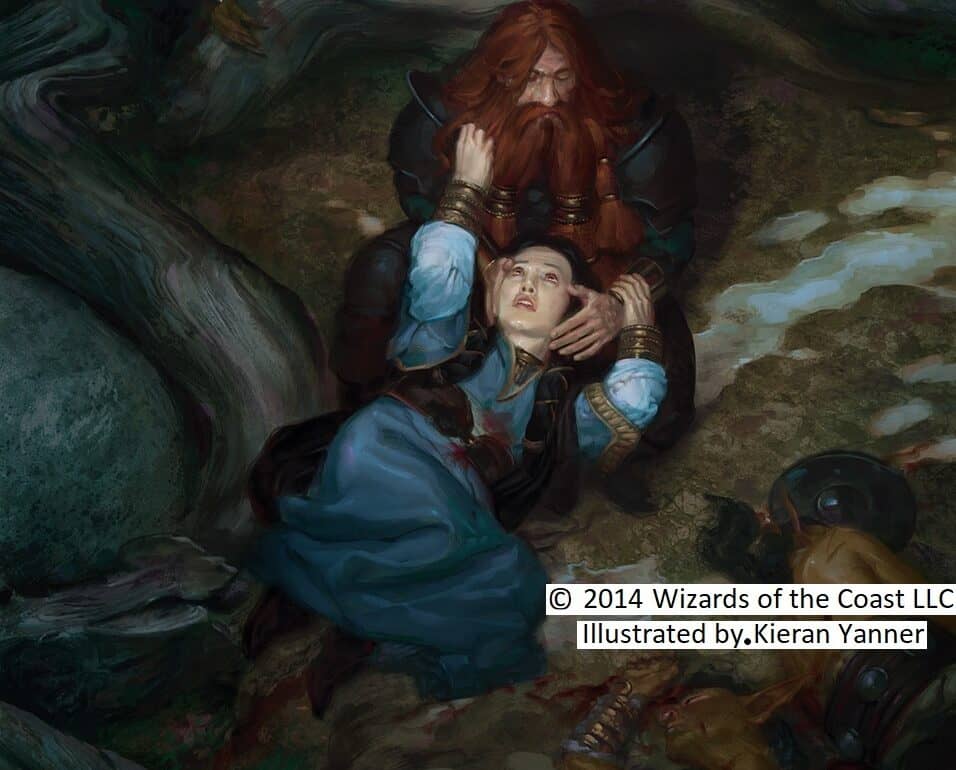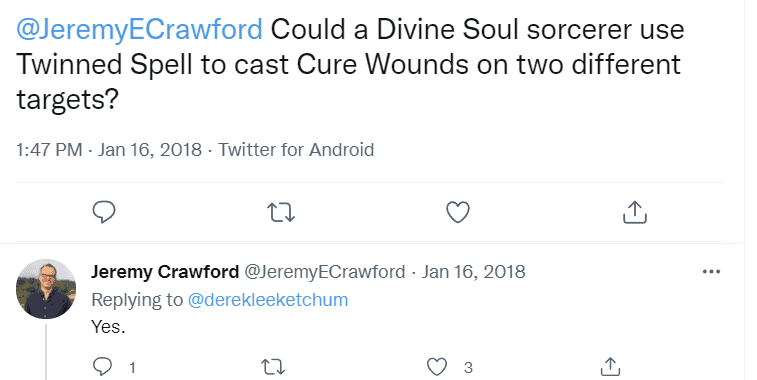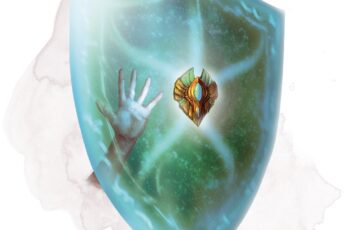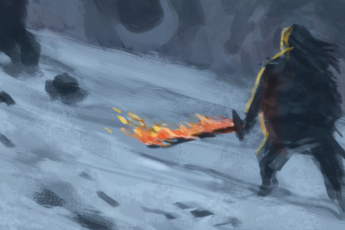
Cure Wounds 5E, found on page 230 of the Player’s Handbook, is one of those spells that everyone needs to survive. In this article, we will break down how the spell works and everything you need to know about Cure Wounds 5E.
Cure Wounds
1st level evocation
- Casting Time: 1 action
- Range: Touch
- Components: V S
- Duration: Instantaneous
- Classes: Artificer, Bard, Cleric, Druid, Paladin, Ranger
- A creature you touch regains a number of hit points equal to 1d8 + your spellcasting ability modifier. This spell has no effect on undead or constructs.
- At Higher Levels: When you cast this spell using a spell slot of 2nd level or higher, the Healing increases by 1d8 for each slot level above 1st.
Higher Level Healing Graph
| 1st level | 2nd level | 3rd level | 4th level | 5th level | 6th level | 7th level | 8th level | 9th level | |
| Healing Dice | 1d8 | 2d8 | 3d8 | 4d8 | 5d8 | 6d8 | 7d8 | 8d8 | 9d8 |
| Min Healing | 1 | 2 | 3 | 4 | 5 | 6 | 7 | 8 | 9 |
| Average Healing | 4.5 | 9 | 13.5 | 18 | 22.5 | 27 | 31.5 | 36 | 40.5 |
| Max Healing | 8 | 16 | 24 | 32 | 40 | 48 | 56 | 64 | 72 |
What classes can cast Cure Wounds 5E?
Cure Wounds can be cast by a variety of classes, including:
| Class | Level |
| Bard | 1st |
| Cleric | 1st |
| Druid | 1st |
| Paladin | 2nd |
| Ranger | 2nd |
| Artificer | 1st |
Spell Components
There are no physical components required for Cure Wounds. All you need is semantic and verbal, meaning you need to be able to speak and have at least one free hand.
Are there any feats that allow you to cast Cure Wounds?
If you are not one of the above classes but wish to learn Cure Wounds, you can do so by taking the Magic Initiate feat.
Once you take the feat, you would choose to access any of the above class’s spell lists. This will allow you to learn two cantrips and one first-level spell, Cure Wounds.
Alternative Uses
Cure Wounds is a straightforward spell and there aren’t very many alternative uses.
You could ask your DM if you could be allowed to use this spell to damage undead creatures. We are all aware of many other tabletop games and video games that allow this mechanic. Personally, I don’t have a problem with it as a DM.
The way I would work this as a DM is to have my player make a spell attack against an undead creature in melee range since they must touch the creature to heal it. If they hit, that means they were able to touch the creature and then can roll their damage (1D8 plus their spellcasting ability modifier).
Our thoughts.
Cure Wounds is a must-have spell for any adventuring party. One way of proving this is that it is available to so many classes. This tells me the creators knew how vital the spell is and wanted to make sure that it was available to more than just one or two classes.
There are other ways to heal yourself besides Cure Wounds, like healing potions, maybe a wand of healing, or of course, taking a short or long rest. However, some of these are not feasible in combat and the others will cost you gold.
To put it very simply, every team needs a healer or two and those healers will use Cure Wounds. So get it, love it, embrace it, and use it as much as you can.
And if you want to be a giant jerk, charge people for healing.
FAQs About Cure Wounds
Can you cure wounds a Warforged?
Yes, Warforged are made of stone and steel but are listed as humanoids. Therefore, they can be affected by all kinds of spells including Cure Wounds.
Can you twin cure wounds 5e?
Yes, if you are a Divine Soul Sorcerer you can twin spell Cure Wounds. I’m going to leave it at that, but if you want further convincing, check out this tweet from Jeremy Crawford, the principal rule designer for Dungeons and Dragons.

Does cure wounds work on unconscious?
Yes, you can cure an unconscious creature. When you are unconscious, you are at 0 hit points. If someone uses Cure Wounds on you and heals you for 5 hit points, you regain consciousness and now have 5 hit points.
Does cure wounds heal undead?
No, according to the spell’s description in the players handbook on page 230. “This spell has no effect on undead or constructs”. However, you can always discuss this with your DM and see if they will allow it.
Curious about other spells in D&D? Check out our spell list.





Leave a Comment